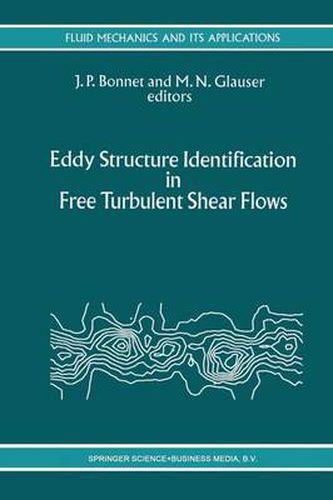Readings Newsletter
Become a Readings Member to make your shopping experience even easier.
Sign in or sign up for free!
You’re not far away from qualifying for FREE standard shipping within Australia
You’ve qualified for FREE standard shipping within Australia
The cart is loading…






This title is printed to order. This book may have been self-published. If so, we cannot guarantee the quality of the content. In the main most books will have gone through the editing process however some may not. We therefore suggest that you be aware of this before ordering this book. If in doubt check either the author or publisher’s details as we are unable to accept any returns unless they are faulty. Please contact us if you have any questions.
The existence and crucial role played by large-scale, organized motions in turbulent flows are now recognized by industrial, applied and fundamental researchers alike. It has become increasingly evident that coherent structures influence mixing, noise, vibration, heat transfer, drag, etc… The accelera tion of the development of both experimental and computational programs devoted to this topic has been evident at several recent international meet ings. One of the first questions which experimentalists or numerical analysts are faced with is: how can these structures be separated from the background turbulence? This is a nontrivial task because the coherent structures are gen erally embedded in a random field and the technique used to determine when and where certain structures are passing, or their averaged characteristics (in the more probable or dominant role sense) is directly related to the definition of the coherent structure. Several methods or approaches are available and the choice of a particular one is generally dependent on the desired informa tion. This choice depends not only on the definition of the structure, but also on the experimental and numerical capabilities available to the researcher.
$9.00 standard shipping within Australia
FREE standard shipping within Australia for orders over $100.00
Express & International shipping calculated at checkout
This title is printed to order. This book may have been self-published. If so, we cannot guarantee the quality of the content. In the main most books will have gone through the editing process however some may not. We therefore suggest that you be aware of this before ordering this book. If in doubt check either the author or publisher’s details as we are unable to accept any returns unless they are faulty. Please contact us if you have any questions.
The existence and crucial role played by large-scale, organized motions in turbulent flows are now recognized by industrial, applied and fundamental researchers alike. It has become increasingly evident that coherent structures influence mixing, noise, vibration, heat transfer, drag, etc… The accelera tion of the development of both experimental and computational programs devoted to this topic has been evident at several recent international meet ings. One of the first questions which experimentalists or numerical analysts are faced with is: how can these structures be separated from the background turbulence? This is a nontrivial task because the coherent structures are gen erally embedded in a random field and the technique used to determine when and where certain structures are passing, or their averaged characteristics (in the more probable or dominant role sense) is directly related to the definition of the coherent structure. Several methods or approaches are available and the choice of a particular one is generally dependent on the desired informa tion. This choice depends not only on the definition of the structure, but also on the experimental and numerical capabilities available to the researcher.